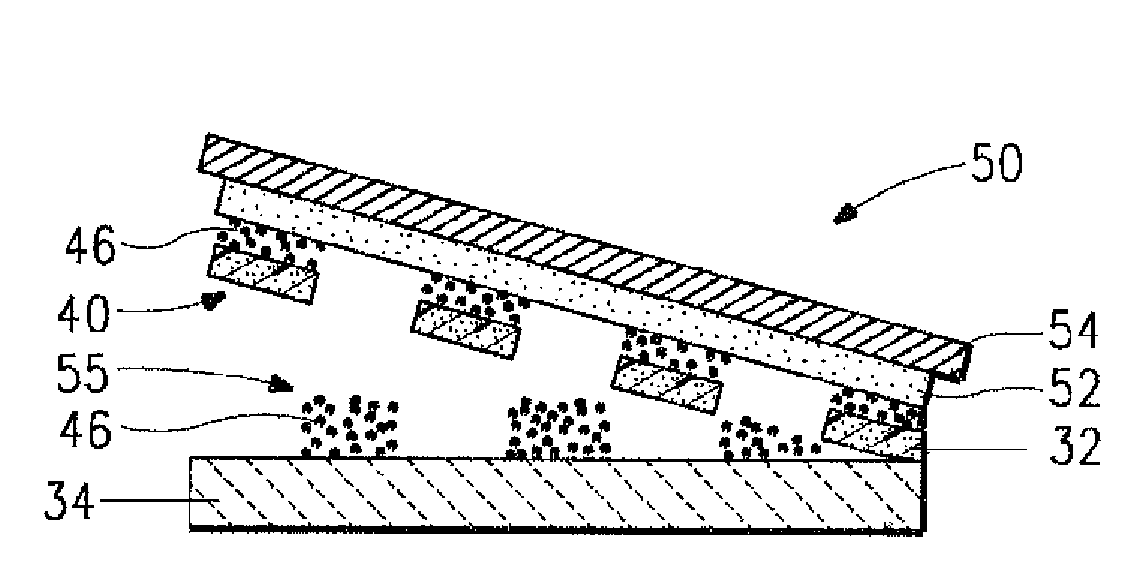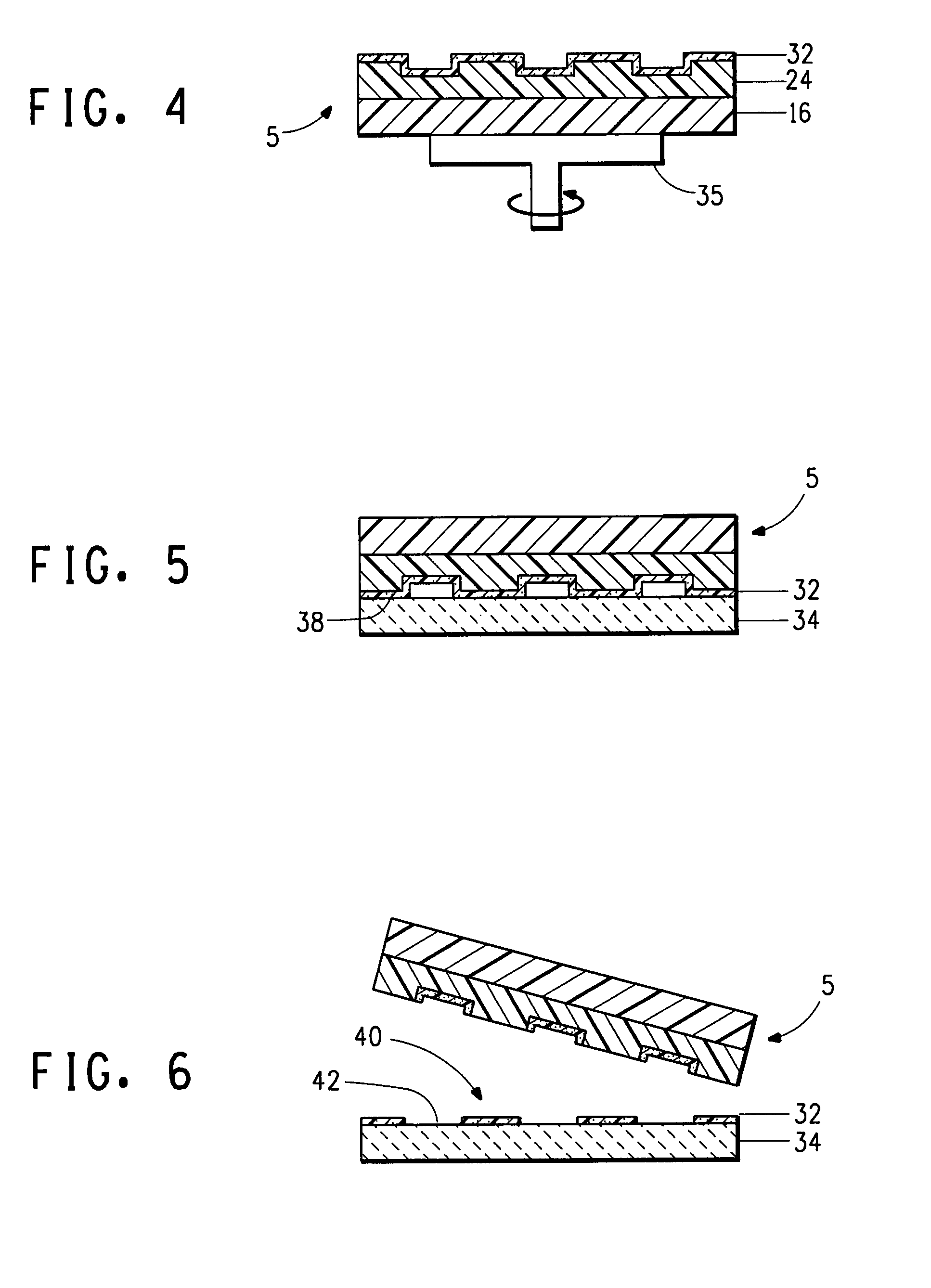Method to form a pattern of functional material on a substrate using a mask material
a technology of mask material and functional material, which is applied in the field of mask material for forming a functional material pattern on a substrate, can solve the problems of complex multi-step process, too costly for plastic electronics printing, and limited to forming metal patterns, microcontact printing of devices and components having patterns,
- Summary
- Abstract
- Description
- Claims
- Application Information
AI Technical Summary
Benefits of technology
Problems solved by technology
Method used
Image
Examples
example 1
[0071]The following example demonstrates a method to form a pattern on a substrate using an elastomeric stamp to print a mask material. Silver nanoparticles were formed into a pattern onto a flexible base that can provide a functional source-drain level of a thin film transistor.
Master Preparation:
[0072]A thin hexamethyldisilazane layer (HMDS) (from Aldrich) was spun coated onto a 2 inch (5.1 cm) silicon wafer at 3000 rpm for 60 seconds. HMDS is an adhesion promoter for a photoresist material on a silicon wafer. A Shipley photoresist, type 1811 (from Rohm and Haas) was spun coated onto the HMDS layer at 3000 rpm for 60 seconds. The photoresist film was pre-baked on the hotplate at 115° C. for 1 minute to complete drying. The pre-baked photoresist film was then imagewise exposed to ultraviolet radiation of 365 nm for 8 seconds in an I-liner (OAI Mask Aligner, Model 200). After exposure the photoresist was developed in developer type MF-319 (from Rohm and Haas) that is tetramethyl amm...
PUM
| Property | Measurement | Unit |
|---|---|---|
| thickness | aaaaa | aaaaa |
| thickness | aaaaa | aaaaa |
| thickness | aaaaa | aaaaa |
Abstract
Description
Claims
Application Information
 Login to View More
Login to View More - R&D
- Intellectual Property
- Life Sciences
- Materials
- Tech Scout
- Unparalleled Data Quality
- Higher Quality Content
- 60% Fewer Hallucinations
Browse by: Latest US Patents, China's latest patents, Technical Efficacy Thesaurus, Application Domain, Technology Topic, Popular Technical Reports.
© 2025 PatSnap. All rights reserved.Legal|Privacy policy|Modern Slavery Act Transparency Statement|Sitemap|About US| Contact US: help@patsnap.com



